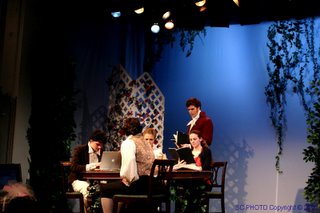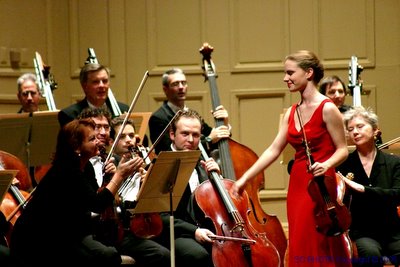It was a rainy Christmas. Right after we entered the temperature and humidity-controlled conservatory, the rain started pouring down, slashing and pounding hard on the glass ceilings. At 3:30pm's Organ Sing-Along, the organist asked us to do a medley of "let it rain" after we did "Rudolf the red-nose reindeer". Truly there was no better place to go to on a rainy Christmas day other than the Longwood Gardens. There were so many beautiful flowers to see. Your eyes will never get enough of them.
Five years ago when I first visited Longwood Gardens, I stayed there for a whole day. It was in early May, tulips were blooming. I probably shot several rolls of films, a little worried about running out of them. This year, armed with three CF cards (256M, 1G, and 2G), I would never worry about not having enough memory. In fact, looking at the 100 pictures I took that day, I wish I had done more. How fast technology has advanced in the past few years!
Orchids are my favorite. There are thousands of different orchids at Longwood Gardens. People were snapping shots all over this orchid room where hundreds of them live, and some of them were taking photos with their cell phones. I think that people should bring better photographic equipment when visiting Longwood Gardens.








 Words are not enough to describe the beauty of orchids. Let's leave it to our eyes for the enjoyment.
Words are not enough to describe the beauty of orchids. Let's leave it to our eyes for the enjoyment.I learned my photography lesson of the day when I quickly mounted my macro lens in the conservatory. I had left the lens out in the car overnight. It was too cold and water condensed on the glass. Being stupid I wiped the glass with velvet. Things only got worse as I found out that those annoying yellow fibers from the velvet were hard to remove from the lens barrel. It ruined some pictures, but hopefully at this reduced resolution you won't be able to pick up those ugly lines.










































